An Archimedes Screw is a type of machine used to lift water. The screw part is usually inside a hollow pipe which is turned by a motor. The rotation of the screw forces liquid or small items upwards. This simple invention is still used in many forms today, thanks to low maintenance costs and high levels of reliability.
An Archimedes Screw is basically an inclined plane and cylinder. To lift water, the lower end must sit in the water.
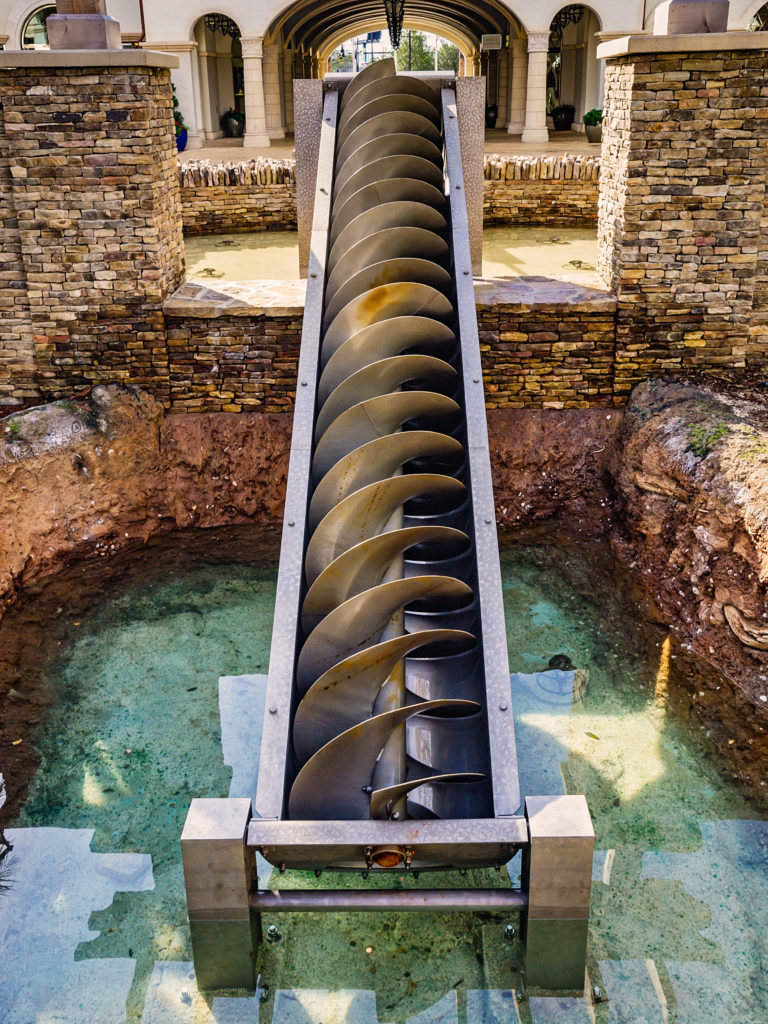
Did Archimedes invent the Archimedes Screw?
Historians date the Archimedes Screw back as far as 250 BC, but there is some evidence that it was used even earlier. It is possible that Archimedes improved the design of something that already exists, but generally, the invention of the Archimedes Screw is attributed to Archimedes.
Build a basic Archimedes Screw
You can create a very simple Archimedes screw using a cylinder and some plastic tubing.
You’ll need:
Cardboard or plastic tube
Thin plastic piping
Tape
Container of water
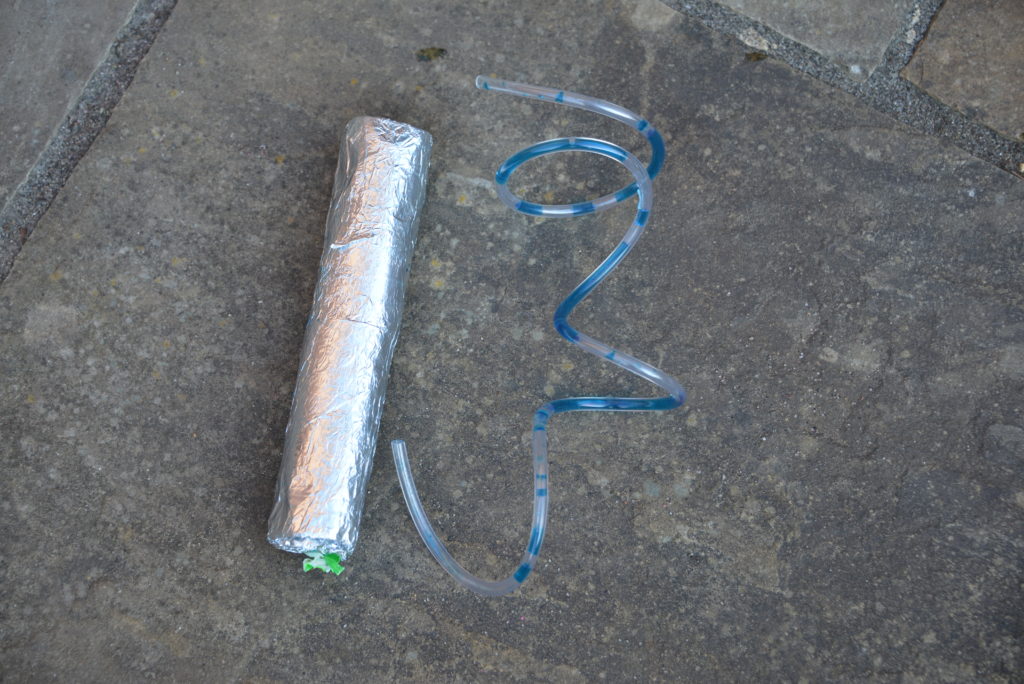
Instructions
I covered our cardboard tube with kitchen foil, just to make it more waterproof.
Wrap the tubing around the cardboard tube and attach securely with tape.
Place one end of the tube in a container of water and rotate the tube. You will see the water rising up the tube!
If it doesn’t work, try rotating the other way.
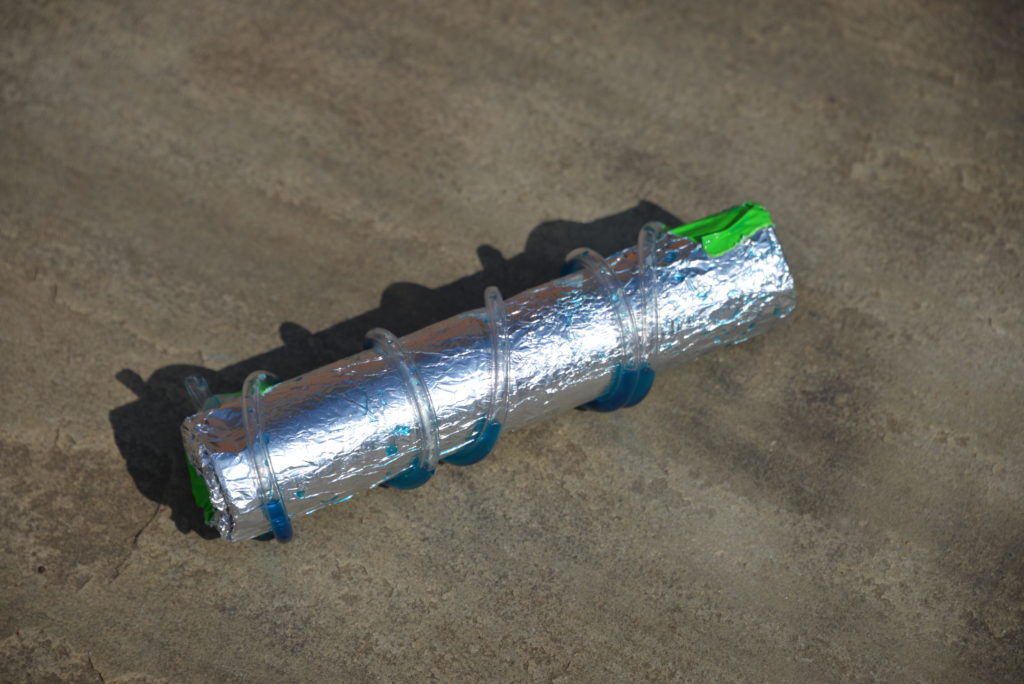
We used DUPLO to create an incline for transporting water to test our contraption. I used food colouring to colour the water, but that was to make it more visible and is not necessary.
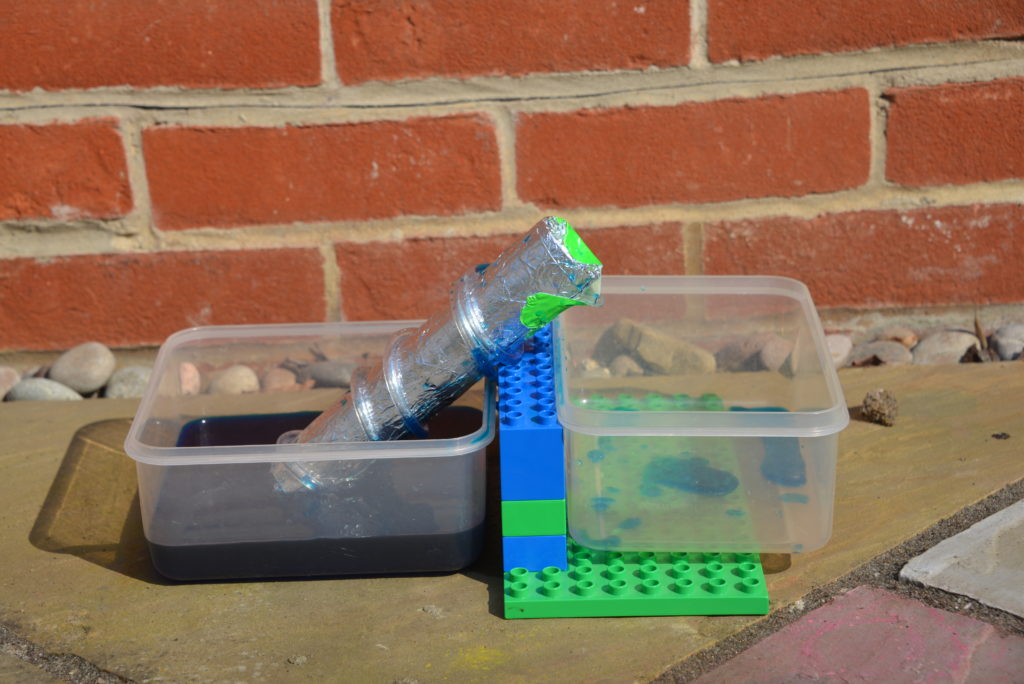
Who was Archimedes?
Archimedes was an incredible mathematician, astronomer and inventor who lived in the 3rd century BCE. Archimedes is famous for working out the value of pi and for realising that an object displaces its own volume of water.
Ancient Greek scientists made many important discoveries that greatly changed the path of science through the years. Other Greek scientists include Pythagoras, Aristotle, Hippocrates, Ptolemy and Euclid.
After making our mini Archimedes Screw, we were very excited to find one in Disney Springs in Florida!
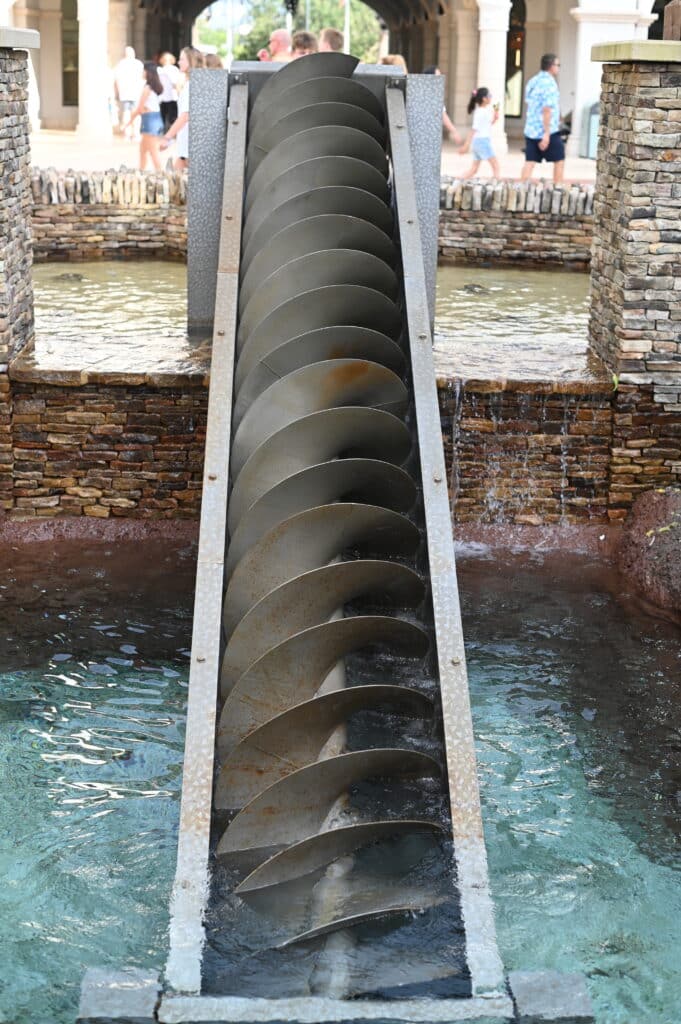
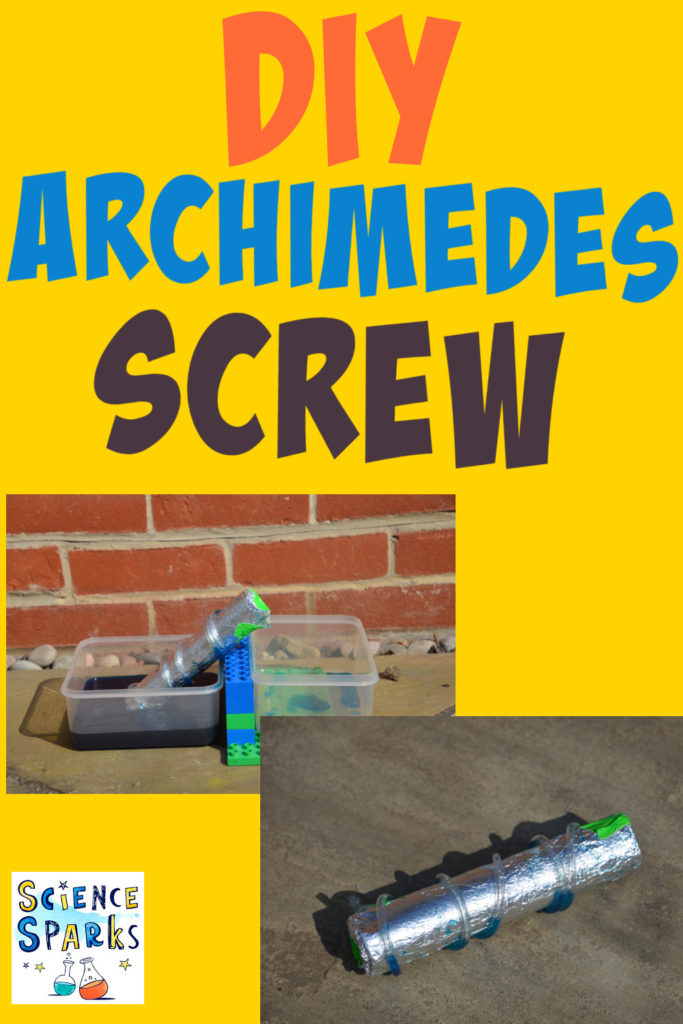
Last Updated on January 31, 2024 by Emma Vanstone

Leave a Reply